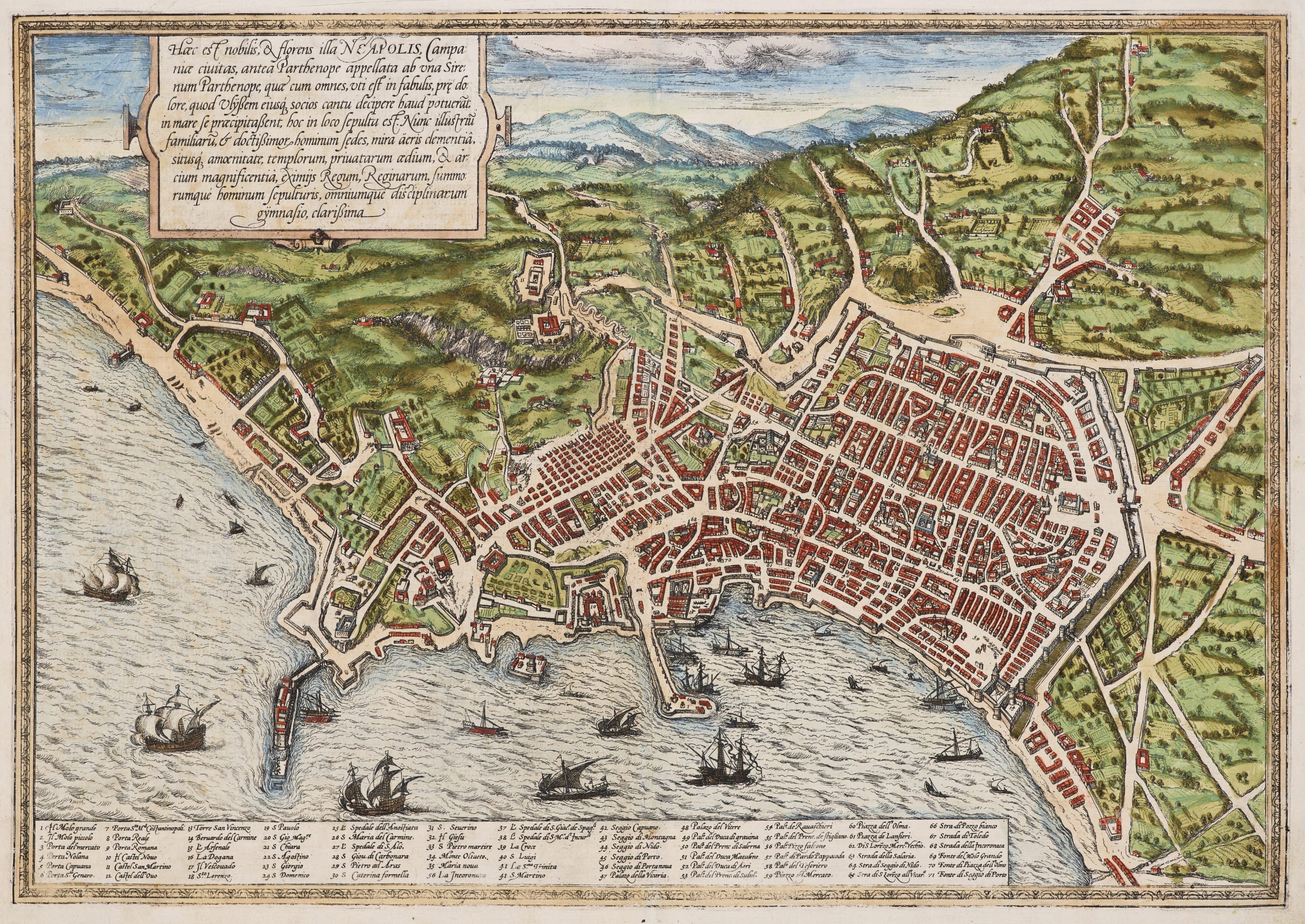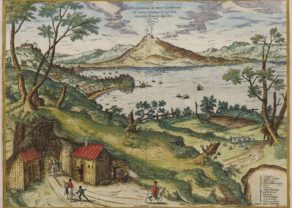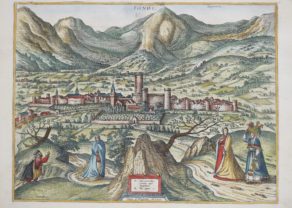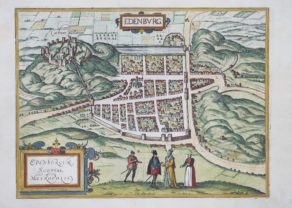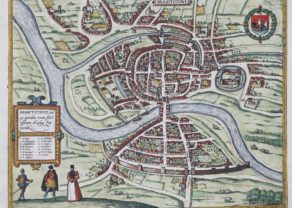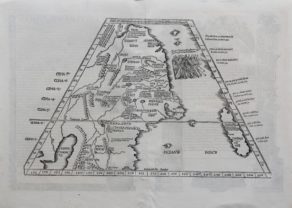Naples – Haec est Nobilis, & Florens Illa Neapolis
Detail
Date of first edition: 1572
Date of this map: 1572
Dimensions (not including margins): 33,5 x 48 cm
Dimensions (including margins): 39,5 x 53 cm
Condition: Very good. Strong paper and wide margins. Centre fold as published.
Condition rating: A
Verso: text in Latin
Map reference: Van der Krogt 2988; Taschen Br. Hog., p. 116
From: Civitates Orbis Terrarum, Liber Primus; Van der Krogt 41:1
In stock
Naples commented by Braun
“The fertile region around Naples […] was the reason that the Romans liked to go to Naples after their work to rest and relax and to seek entertainment. This is where, amongst others, the most excellent poet Virgil lived, who wrote his Georgica book on agriculture here, so Servius says. Livy, Horace, Claudianus, Francesco Petrarch, Lorenzo Valla, Flavio Biondo and many others also lived here. […] The streets are clean and straight. The strongest fortress in Naples is the Castel Nuovo, which may be rightly considered the safest castle in all Europe.”
TRANSLATION CARTOUCHE: This is the notable and flourishing city of Naples in Campania, formerly called Parthenope, after Parthenope the siren, who was buried in this place. As legend relates, the sirens cast themselves into the sea in fury after they had been unable to seduce Odysseus and his companions with their song. Naples, today the residence of illustrious families and most learned men, is distinguished for the wonderful mildness of its air and its delightful location, the magnificence of its churches, private houses and palaces, beautiful tombs of kings, queens and high-ranking persons, and a university with all the faculties.
Taschen on Naples
Naples is presented from a plan-like bird’s-eye view. The dominant impression is of a bustling city and trading port with a well-designed layout and impregnable citadel. Naples saw its greatest flowering in the early modern era under Alfonso V of Aragon, who as Alfonso I was also king of Naples and Sicily. Between 1450 and 1550 it grew from 40,000 to 210,000 inhabitants and thereby became Europe’s second-largest city after Paris. Noteworthy here are the three forts: the Castel Nuovo (10) lies directly on the seafront beside the large mole. On the rocky promontory on the left, the Castel dell’Ovo (12) in the Santa Lucia district is a harbor fort from the 9th century. Looking out over the bay from above the city, lastly, is the 14th-century Castle Sant’Elmo (Castel S. Martino, 11), next to the Certosa di San Martino (41).
Related items
-

Naples – Elegantissimus ad Mare Tyrrhenum ex Monte Pausilipo Neapolis Montisque Vesuvius Prospectus,
by Georg Braun and Frans HogenbergPrice (without VAT, possibly to be added): €1 100,00 / $1 221,00 / £979,00 -

Fondi (Lazio)
by Georg Braun and Frans HogenbergPrice (without VAT, possibly to be added): €750,00 / $832,50 / £667,50
